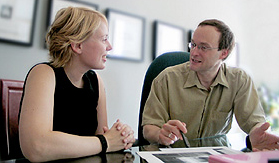From the Ask Tom mailbag –
Question:
I am working on our role descriptions around time span. Do you have a set of definitions that would communicate levels of work that would be user friendly?
Response:
Great question. Levels of work is only valuable if we can easily recognize it in work behavior. It’s not only what we can observe, as managers, but how we describe the work, our expectations and written role descriptions. Here are some clues.
S-I is typically a production role of some sort. Often, what our customer experiences is a direct result of this level of work.
- The carpet that gets cleaned.
- The car that gets washed.
- The product assembled.
- The package delivered.
This role typically uses real tools, machinery, equipment as part of that service delivery or production. If it is a clerical position, probably a computer.
S-II is typically an implementation role, coordinating role, scheduling role, using checklists, schedules and short huddle meetings. The purpose of this role is to make sure production gets done, according to standards and deadlines.
S-III is typically a system role, to design work flow, inputs and outputs for consistency. This role would use flow diagrams, schematics, sequence and planning tools.
S-IV is typically an integration role, observing and facilitating system integration, the way in which one system in the organization interacts with other systems. This level of work specifically focuses on two things –
- Optimizing output from each system to balance total throughput from the whole organization. This balances the volume of marketing leads assigned to sales follow-up against operations capacity to fulfill. We can write too many contracts that outstrips our capacity to fulfill.
- Manicuring the work output or handoff from one system to another. This is to ensure the work output from one system meets the input spec for the next system.
S-IV looks at total organization throughput for all the systems working in concert.
As you write the role description, using these descriptions will provide insight on how decisions are made and problems solved in the role. BTW, that’s work, making decisions, solving problems.
